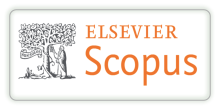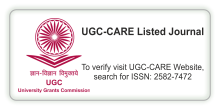REASSESSING INDIA’S LOOK EAST POLICY: INSURGENCY, STRATEGIC ENGAGEMENT AND REGIONAL SECURITY
DOI:
https://doi.org/10.29121/shodhkosh.v5.i4.2024.6417Keywords:
Look East Policy, Insurgency, Security, Strategic Engagement, Border TradeAbstract [English]
Ever since India initiated its Look East Policy in the early 1990s, the concern to engage with Southeast Asia had significantly increased. The end of cold war and globalization were the twin factors that informed the Indian policy makers to look eastward. India’s policy shift towards Southeast Asia is guided by political, economic, strategic and security interests. Politically, India had to re-define her neighbourhood in search for an alliance after the disintegration of Soviet Union. From economic point of view, ASEAN can serve as a springboard for India’s integration with the world economy. Strategically, it is imperative to counter Chinese strategic expansion in Southeast Asia. From security angle, there is a need to secure the sea lanes in order to ensure smooth passage of Indian commercial ships as well as to subdue armed insurgents in the Northeast. The Look East Policy is the outcome of the inter-play of these factors. Nonetheless, it was the failure of India’s Look West Policy that proved decisive for the strategic shift in India’s foreign policy. Moreover, the Look East Policy represents the crystallization of India’s external response to the pressure piled up by global capital while internally India adopted economic liberalization to cope with its financial crises.
References
Baruah, Sanjib. 2004. “Between South and Southeast Asia: Northeast India and the Look East Policy”. Guwahati: CENISEAS.
Chandra, Prakash, 1994. International Relations. New Delhi: Vikas Publishing House.
ICWA Foreign Affairs Report, 2003. “India-ASEAN: Evolving Strategic Partnership”. Indian Council of World Affairs, Vol.2, Nos. 7-12, July-December, pp. 34-40.
Jaffrelot, Christophe. 2003. “India’s Look East Policy: Asianist Strategy in Perspective”. In India Review, Vol. 2, no.2, April: 35-68. DOI: https://doi.org/10.1080/14736480412331307022
Jha, Pankaj. 2005. “BIMST-EC: A New Regional Initiatives”. South Asia Politics, May: 49-51.
Kangujam, Sanatomba. 2005. “India’s Look East Policy: The Unfolding Dynamics”. Alternative Frames. Vol. 1. Issue I. October-December.
Konsam, Ibo Singh. 2005b. Indo-Myanmar Border Trade: Imperatives and Present Status” in Gurudas Das, Indo-Myanmar Border Trade: Status, Problems and Potential. New Delhi: Akansha Publishing House.
Konsam, Ibo Singh. 2005a. “Insurgency in North East India and the Myanmar Connection” in S.K. Agnihotra (eds.). Perspective of Security and Development in North East India. New Delhi: Concept Publishing Company.
Konthoujam, Indrakumar. 2005. “Mapping India’s Look East Policy: Shifting Alignment”. Alternative Frames. Vol. 1. Issue I. October-December.
Kumara, Sarath. 2005. “Burma Visit Highlights India’s ‘Look East’ Strategy”, India, 6th April 2005 <http://www.wsws.org/articles/2005/apr2005/indi-a06_prn.shtml>
Langpoklakpam, Suraj Singh. 2006. Movement for Democracy in Myanmar. New Delhi: Akansha Publishing House
Ministry of External Affairs (MEA). (2004, October 29). Joint Statement on the Occasion of the State Visit of Senior General Than Shwe to India. Retrieved from https://www.mea.gov.in/Speeches-Statements.htm?dtl/3834
Oinam, Bhagat. 2005. “Manipur” in Mayumi Murayama et.al. (Eds). 2005. Sub- Regional Relations In the Eastern South Asia: with special focus on India’s North Eastern Region. Tokyo, Japan:Yugengaisha Tohkohsha
Pradhan, Radhe Gopal. 2005. “India’s Look East Policy: A Holistic Policy”. In South Asia Politics, May: 33-35.
Sheereen, Zeba. 2005. “Regionalism and Economic Opportunities for India-SAARC or ASEAN”. Third Concept, April, 2005. pp. 7-15.
The Telegraph, Guwahati, 2006
Yumnam, Amar. 2005. “Indo-Myanmar Trade through Moreh: Status and Assessment” in Gurudas Das, Indo-Myanmar Border Trade: Status, Problems and Potential. New Delhi: Akansha Publishing House.
Downloads
Published
How to Cite
Issue
Section
License
Copyright (c) 2024 Dr. Kangujam Sanatomba Meitei

This work is licensed under a Creative Commons Attribution 4.0 International License.
With the licence CC-BY, authors retain the copyright, allowing anyone to download, reuse, re-print, modify, distribute, and/or copy their contribution. The work must be properly attributed to its author.
It is not necessary to ask for further permission from the author or journal board.
This journal provides immediate open access to its content on the principle that making research freely available to the public supports a greater global exchange of knowledge.































